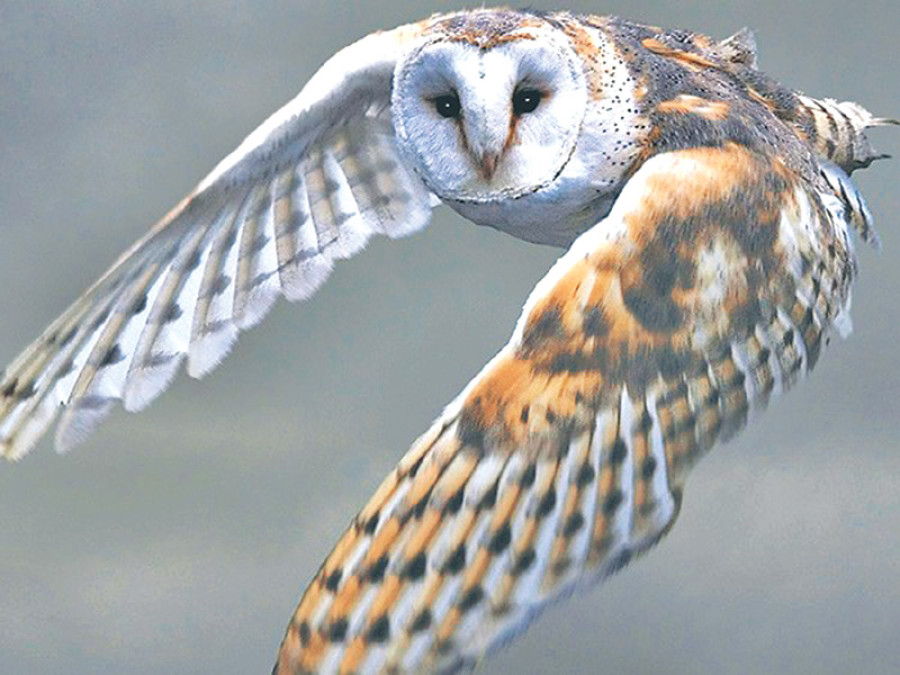Miscellaneous
Dolakha hosts national festival dedicated to conservation of owls
Owls are one of the highly vulnerable species of bird in the country with an estimated 2,000 being illegally trafficked from Nepal every year, a study has found.
Chandan Kumar Mandal
Owls are one of the highly vulnerable species of bird in the country with an estimated 2,000 being illegally trafficked from Nepal every year, a study has found.
The study, conducted about two years ago, found that nearly 200 owls were being trafficked from Dolakha alone, according to Raju Acharya, executive director of the Friends of Nature (FoN), an organisation working in the field of conservation.
The study, based on data compiled from reports of trafficking and seizing incidents of owls from different parts of the country, was unveiled during the Nepal Owl Festival-2018 which kicked off on Friday in Jiri, a tourist hub of Dolakha district.
The two-day event has been organised with an objective to promote conservation of owls and raise awareness about their significance in the nature.
Nepal’s National Red List of Birds (2015) has enlisted eight species of owls as endangered in the country.
Experts believe that owls were persecuted because of their negative social impression, cultural beliefs, low-awareness about its importance in nature.
“Their numbers are surely decreasing. Owls are also killed because of superstition. In some cases, they are traded to India for performing black magic and demand goes up during Laxmi Puja. In China, it is said to be used for medicinal purpose,” said FoN Wildlife and Conservation Research Director Yadav Ghimire.
The country has so far enlisted 22 species of owls, which are found across the country from the low-lying Tarai plains to the mountainous regions.
“As there has not been any scientific study on the owls in the country, we don’t know the exact number of these nocturnal birds and whether their number was decreasing. However, the scenario so far shows the species is threatened because of habitat loss, wildfire, increasing cases of trafficking,” added Acharya, who is also the Nepal representative of the UK-based World Owl Trust.
The seventh edition of the owl festival was a big draw, with the participation of school children, elderly citizens, government officials, local-level representatives and bird conservationists from different parts of the country.
A temporary museum, set up for the two-day event, displayed different artistic materials, poems, essays, paintings by local students, audio-visual materials, posters, pamphlets, books, giving information on owls.
Nepal is only the third country in the world after Italy and the United States to organise a festival on owls. This year’s event was organised in Dolakha district, keeping the fact in the mind that the district has the highest number owls trafficking, according to organiser.
“This festival is much more than a just fanfare. Besides raising awareness about the conservation of owls, it will also boost eco-tourism in the area in the long run if the locals come forward in the preservation of these birds. Owls are the second most important scavenger of nature after vultures,” said chief of the Gaurishankar Conservation Area Project (GCAP) Satya Narayan Sah.
Owls are said to be friends of farmers as one family of owls can eat nearly 3,000 rats, which would damage crops, in four months.
Despite being the threatened species, they have not been included in the list of protected birds in the country yet nor has there been any programme and study dedicated to finding out the status of owls, complain birds experts.
“If we want to conserve this important species of birds, we must include them among other nine species of protected birds and start treating owls as an integral part of wildlife.
Likewise, illegal poaching and trafficking of owls should be closely monitored and punished,” said Acharya, calling for a baseline study in the Tarai, Hills and Mountain regions for gathering comprehensive information on their status and comparing their numbers in future.
Experts also called for an immediate government intervention for preservation of species of Rock Eagle owl, Eurasian owl, Brownwood owl, Short-ear owl, Long-
ear owl.




 21.12°C Kathmandu
21.12°C Kathmandu










